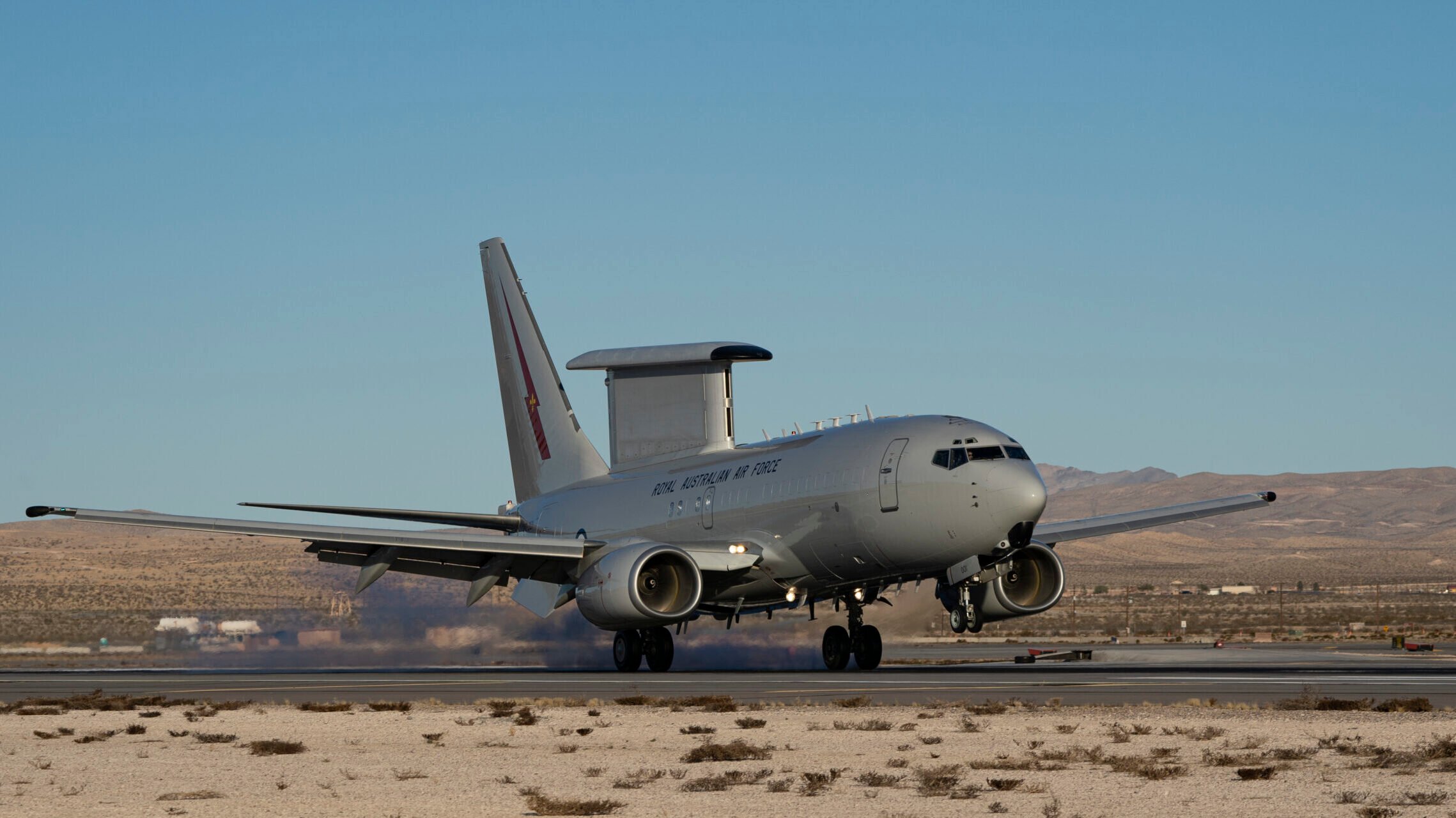
A Royal Australian Air Force E-7A Wedgetail airborne early warning and control aircraft assigned to 2 Squadron, RAAF Amberly, Australia, lands safely after a mission during Red Flag 20-1 at Nellis Air Force Base, Nevada, Jan. 30. 2020. (U.S. Air Force Photo William R. Lewis)
WASHINGTON — The U.S. Air Force has awarded Boeing an undefinitized contract with a $1.2 billion ceiling to kickstart development of the service’s E-7A airborne battle station, the Pentagon announced Tuesday.
Adapted from the E-7 flown by foreign partners like Australia, the E-7A, known as the Wedgetail, will provide critical battlespace management capabilities such as situational awareness and targeting for the joint force. It will also replace the venerable E-3, which first entered service in 1977, to become the Air Force’s new eye in the sky.
The contract comes after the Air Force said in a justification and approval (J&A) notice last year that the need to quickly retire the E-3 prompted officials to tap Boeing for a sole-source acquisition, citing ready access to a production line. The notice, which did not provide a value for the contract or name the other two platforms the service evaluated in the process, stated that officials originally planned to field 22 of the aircraft, with initial operational capability reached in fiscal 2030.
Officials now plan to field a fleet of 26 of the aircraft, according to the contract announcement, with the first E-7A scheduled to arrive in FY27.
The Air Force previously announced in April 2022 it intended to buy the aircraft after awarding Boeing a contract for analysis of the E-7A in October 2021.
“The E-7A will be the Department’s principal airborne sensor for detecting, identifying, tracking, and reporting all airborne activity to Joint Force Commanders,” Air Force acquisition chief Andrew Hunter said in a press release on Tuesday.
“This contract award is a critical step in ensuring that the Department continues delivering battle space awareness and management capabilities to U.S. warfighters, allies and partners for the next several decades. The E-7A will enable greater airborne battlespace awareness through its precise, real-time air picture and will be able to control and direct individual aircraft under a wide range of environmental and operational conditions,” he added.
The award to begin development on the aircraft was issued as an undefinitized contract action, meaning the Air Force and Boeing are still working to come to terms on exact values. According to the Air Force, the service is using a rapid prototyping pathway to field the first two E-7As and will buy an additional 24 by FY32.
The Air Force is in the process of retiring the E-3 due to issues like diminishing availability for parts and outdated sensors. According to the 2022 J&A notice, the problems have created a dire lack of readiness: just 20% of E-3s were fully mission capable in FY21, which the notice said was the lowest on record.
Lawmakers expressed concern during congressional hearings last year that the Air Force’s plan to divest 15 of 31 AWACS aircraft in FY-23 could lead to a gap in capabilities, but service officials responded that the gap already exists due to low mission capable rates and that sustainment dollars could be better spent on building the aircraft’s successor.
Lawmakers eventually granted the divestment request in the compromise FY23 National Defense Authorization Act but with caveats that required the Air Force to submit an acquisition plan to the congressional defense committees and that two AWACS be retained for training purposes.
To exempt the aircraft’s acquisition from the requirements of the FY23 continuing resolution that prevented the launch of new programs, the Air Force sought special permission, known as a reprogramming request, to stand up the Wedgetail’s program office. Lawmakers subsequently approved that request and the office was opened in September 2022, according to a report in Inside Defense.
The 2022 J&A notice stated that the Air Force would seek concessions from Boeing during the aircraft’s development for ownership of features like data rights. Doing so would enable the service to open up competition for the program “to the maximum extent practicable” for services like maintenance and upgrades.
“We conducted a thorough analysis of viable industry options to ensure the selected E-3 replacement could meet the specific needs of the U.S.,” Hunter said in the Air Force’s press release. “Until the E-7A is fielded, we will continue to rely on the E-3 AWACS,” he added.






















